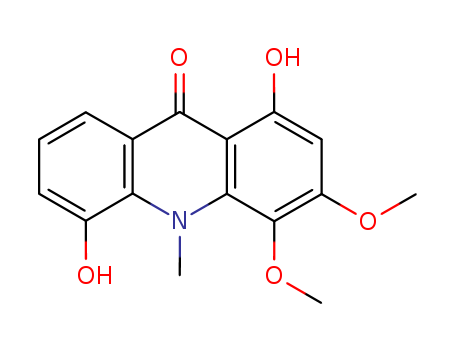Multi-step reaction with 7 steps
1: 4 N aq. NaOH / benzene; CH2Cl2; H2O / 1 h / Ambient temperature
2: 1.) sec-BuLi, TMEDA, 2.) I2 / 1.) hexane, THF, -78 deg C, 1 h, 2.) hexane, THF, -20 deg C, 10 min
3: 81 percent / K2CO3, CuCl / propan-2-ol / 1.5 h / Heating
4: 69 percent / K2CO3 / dimethylformamide / 3 h / 20 - 45 °C
5: 1.) POCl3, 2.) 1 N aq. HCl / 1.) reflux, 30 min, 2.) EtOH, reflux, 1 h
6: 78 percent / KOH / dimethylsulfoxide / 1 h / Ambient temperature
7: 20 percent / 6 N aq. HCl / ethanol / 4 h / Heating
With
hydrogenchloride; potassium hydroxide; sodium hydroxide; N,N,N,N,-tetramethylethylenediamine; iodine; sec.-butyllithium; potassium carbonate; copper(l) chloride; trichlorophosphate;
In
ethanol; dichloromethane; water; dimethyl sulfoxide; N,N-dimethyl-formamide; isopropyl alcohol; benzene;
DOI:10.1248/cpb.41.445






